Michigan Garden Ideas: Fresh Inspiration for Your Backyard
Gardening in Michigan can be a delightful and rewarding experience, given the variety of plants well-suited to its unique climate. From vibrant flowers to hardy shrubs, there’s a wealth of options that can transform your outdoor space into a lush haven. Michigan’s diverse weather patterns provide the perfect conditions for many stunning plants to thrive.
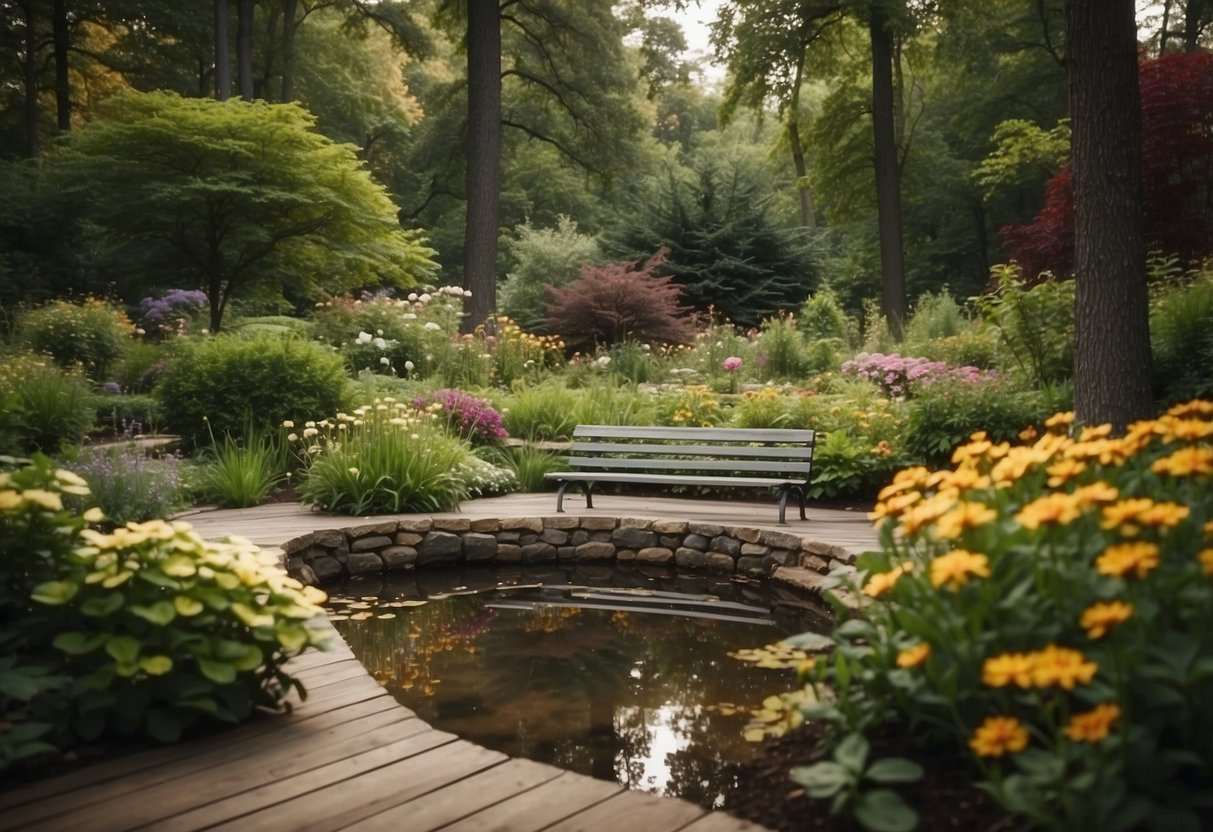
Whether you’re a seasoned gardener or just starting out, there are countless ideas to enhance your garden and make it stand out. With the right selection, your Michigan garden can be both beautiful and low-maintenance, ensuring you enjoy its beauty with minimal effort.
1) Raised Bed Gardens

Raised bed gardens are a great way to grow plants in Michigan. They offer better soil control and drainage. This is important since Michigan’s weather can be unpredictable.
To start, use materials like wood or stone to build the beds. Make sure you include drainage holes if the beds are above ground.
Watering is key. Raised beds lose water faster than ground gardens. Use about one inch of water per week, especially in the summer.
Adding a trellis can support plants like tomatoes and cucumbers. It also adds a nice visual touch.
2) Butterfly Garden

Creating a butterfly garden in Michigan is a fun project that connects you with nature. Start by choosing nectar-producing flowers like zinnias and tall verbena. These colorful plants attract butterflies and hummingbirds.
Plant flowers in a sunny spot. Butterflies prefer full sun to shade. Include plants like the Nanho Blue butterfly bush, which blooms from mid-summer through fall and is drought-tolerant once established.
Adding a variety of plants helps attract different butterfly species. Incorporate both annuals and perennials to ensure you have blooms throughout the season. This way, your garden stays vibrant and full of life.
3) Herb Spiral

An herb spiral is a beautiful and productive way to grow your herbs. It’s a raised garden bed that starts taller in the middle and spirals down to ground level. This design allows you to grow a variety of herbs in a small space.
You can make an herb spiral using materials like stone, brick, or wood. It’s a great project if you enjoy DIY gardening.
Herb spirals are popular in permaculture and can add a unique touch to your Michigan garden. You’ll love the mix of herbs you can grow in this versatile garden structure.
4) Michigan Wildflower Garden

Planting a Michigan wildflower garden is a fantastic way to enjoy local beauty. You can attract pollinators like bees and butterflies with plants such as Azure Bluet, which thrives in open forests and meadows.
Consider adding colorful tickseed, black-eyed Susan, and butterfly weed. These flowers mix well and spread easily, creating a vibrant meadow. Including wild grasses will enhance the garden’s appeal and invite more wildlife.
By choosing native plants like Puttyroot orchid, you ensure that your garden is both beautiful and eco-friendly. Happy gardening!
5) Container Gardening

Container gardening is perfect if you have limited space. You can grow a variety of plants in pots on patios, balconies, or even indoors.
Choose plants that thrive in small spaces, like herbs, miniature roses, or creeping thyme. Make sure your containers have good drainage to keep your plants healthy.
For more ideas, check out these container garden inspirations. Don’t let a small yard stop you from enjoying a beautiful garden!
6) Rain Garden

A rain garden is a practical and eco-friendly idea for your Michigan garden. It’s designed to capture and soak up rainwater, which helps to prevent flooding and erosion.
Rain gardens are usually a few inches deep and can come in various shapes like crescents, kidneys, or teardrops. They typically range from 100 to 300 square feet, depending on the soil type.
You can find great plants for your rain garden, such as red osier dogwood for northern areas or pacific dogwood for western regions. Check out more options for rain garden plants.
7) Rock Garden

Creating a rock garden in Michigan is a fun way to add texture and color to your yard. Start by choosing rocks of different sizes and colors to make the garden visually interesting.
Add plants like creeping phlox that thrive in dry, well-drained soil. You can also use mugo pine for some greenery that stays vibrant in winter.
For added interest, consider planting ornamental grasses like blue fescue. These plants add height and color, making your rock garden a beautiful year-round feature.
8) Vertical Garden
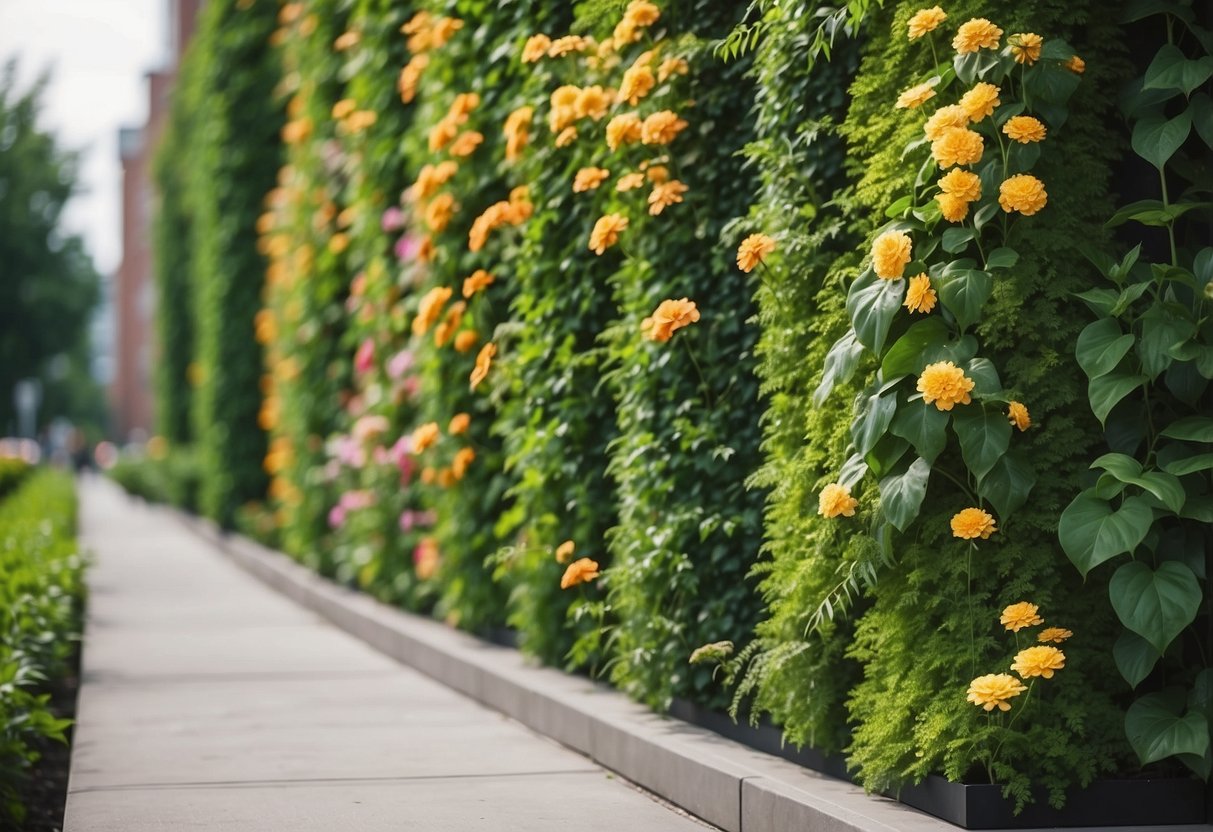
Creating a vertical garden is a perfect way to make the most of your space if you live in Michigan, especially in urban areas or if you have a small backyard.
You can use materials like wooden pallets, trellises, or wire mesh panels to build your vertical garden. Adding planters to a fence or wall is another great option.
Vertical gardens are excellent for growing herbs, flowers, and even vegetables. They also bring a stylish touch to your space. For more ideas, check out unique DIY vertical garden ideas.
9) Native Plant Garden

Creating a native plant garden in Michigan is a great way to support local wildlife. Native plants are adapted to the local climate, making them easier to care for and beneficial to the ecosystem.
Try planting species like Jack-in-the-Pulpit, which thrives in shady, moist areas. This unique plant is known for its hooded flower and can grow up to 2 feet tall.
You can also consider White Swamp Milkweed. It’s perfect for attracting pollinators like butterflies and grows well in wet conditions. For more ideas, check out this Michigan Native Plant Garden Guide.
10) Shade Garden

Creating a shade garden in Michigan can be a delightful way to enjoy plants that thrive without much sun.
Consider adding Hostas, a popular choice known for their variety in sizes, textures, and colors.
Woodland Phlox is another excellent option, bringing delicate flowers to shaded areas.
For a touch of elegance, you can plant Columbine, known for their bell-shaped blooms in various shades.
Optimizing Soil For Michigan Gardens
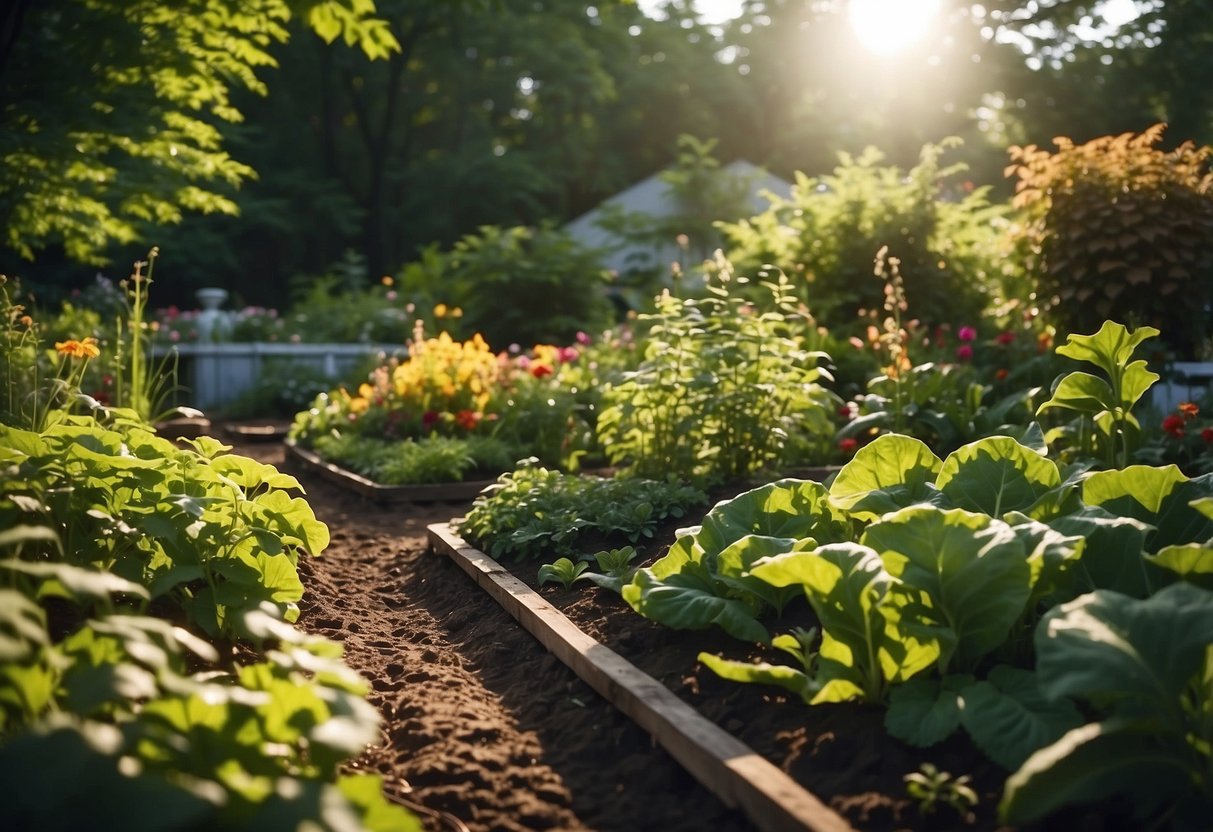
Optimizing your garden soil in Michigan is crucial for a successful harvest. Understanding soil types and amending the soil are key steps in this process.
Understanding Soil Types
Michigan has diverse soil types, including sandy, loamy, and clay soils. Sandy soil drains quickly, which helps prevent root rot but may need more frequent watering. Clay soil holds water well but can become compacted, limiting root growth. Loamy soil is often ideal because it balances drainage and nutrient retention.
To determine your soil type, dig a small hole and examine the texture. If the soil feels gritty, it’s likely sandy. If it feels sticky and forms clumps, it’s clay. Loamy soil feels crumbly and smooth. Knowing your soil type helps you make informed decisions about managing moisture levels and nutrients for optimal plant growth.
Amending Michigan Soil
Once you understand your soil type, you can start improving it. For sandy soil, add organic matter like compost or peat moss to increase water retention. In clay soil, incorporate sand or coarse organic materials to improve drainage and aeration.
Conduct a soil test to check pH levels and nutrient content. Michigan soils often benefit from an application of lime to raise the pH or sulfur to lower it. Add fertilizers based on the test results to supply necessary nutrients like nitrogen, phosphorus, and potassium.
Incorporate these amendments thoroughly into the soil to ensure even distribution. Regularly adding organic materials not only enhances soil structure but also boosts microbial activity, which is vital for healthy plant growth.
Planting The Right Vegetables
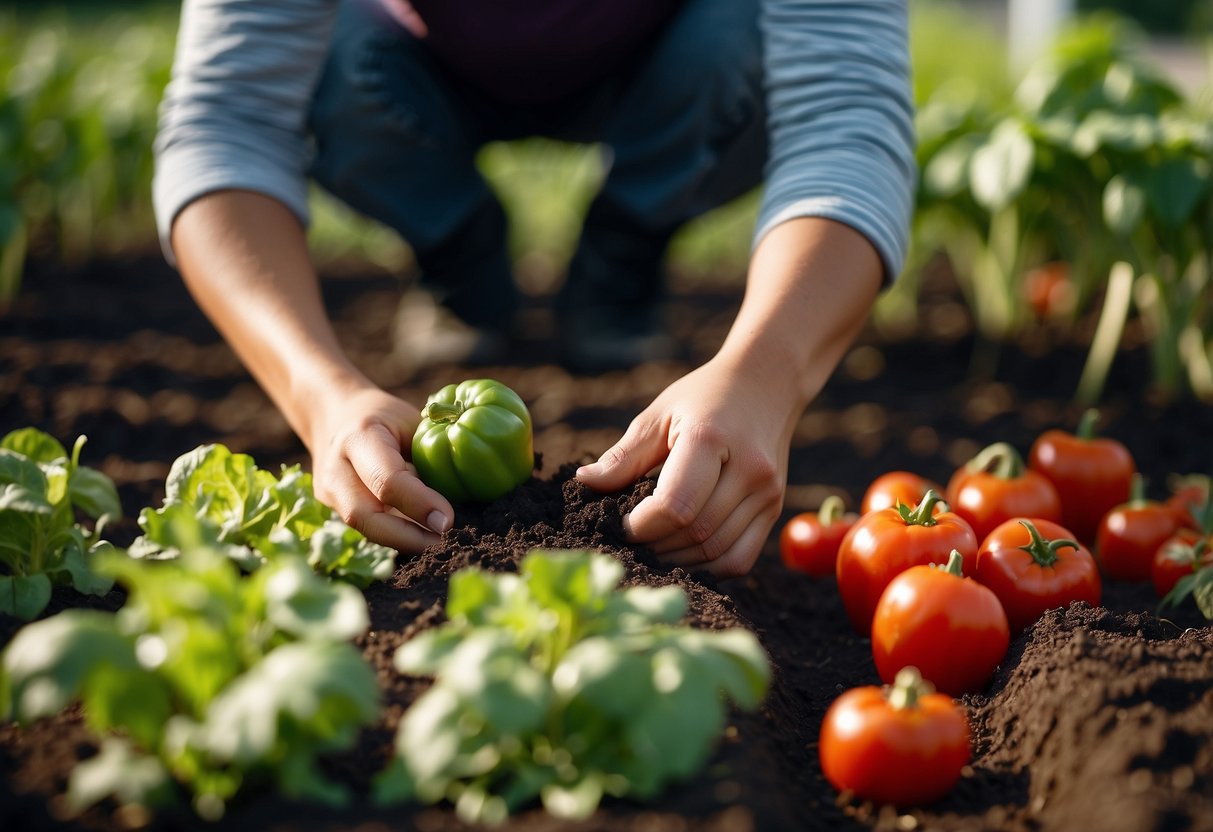
Choosing the right vegetables for your garden in Michigan involves considering the climate and timing your planting for the best yields. Let’s explore what grows well and when you should plant them.
Best Vegetables For Michigan Climate
Michigan’s climate supports a wide variety of vegetables. Cool-weather crops like broccoli, spinach, and radishes are perfect for early spring or fall. Broccoli thrives in cooler temperatures and can be started around 90 days before the first frost. Spinach and radishes also grow well when it’s cool and are among the easiest vegetables to cultivate.
Warm-weather vegetables like zucchini, eggplant, and corn can be planted during the warmer months. Zucchini is versatile and hardy, while eggplants need plenty of space and sunshine. Corn, specifically hardier varieties, can be planted as early as mid-April in southern areas of Michigan for a summer harvest.
Seasonal Planting Guide
Timing your planting is crucial. Begin with cool-season vegetables like spinach and radishes in early spring. These can be sowed as soon as the ground is workable. Broccoli can be planted about 90 days before the expected first frost for a bountiful fall harvest.
For warm-season crops, wait until the danger of frost has passed, usually by mid-May in most of Michigan. This is the time to plant zucchini, eggplant, and corn. Corn requires well-drained, loamy soil and should be planted in rows with seeds spaced 8-12 inches apart.
Succession planting is a smart strategy in Michigan gardens. By staggering your planting times, you can ensure a continuous harvest throughout the growing season. This means replanting short-maturity crops like radishes every few weeks. Adding organic mulch around plant bases helps maintain soil temperature and reduce weeds.
Creating Pollinator-Friendly Spaces
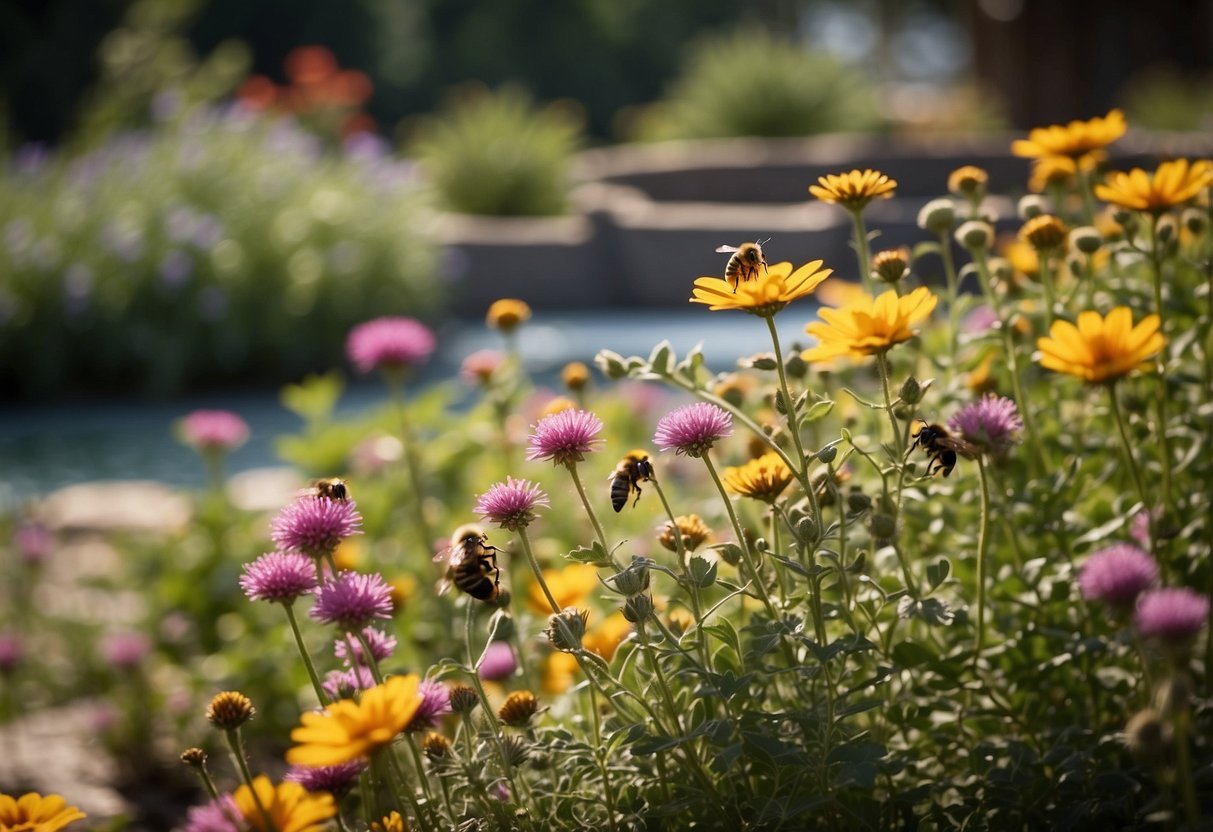
Creating a garden that supports pollinators involves attracting beneficial insects like bees and butterflies and using native plants. A variety of plants will provide food and habitat all season long.
Attracting Bees and Butterflies
Bees and butterflies need food, water, and shelter. Planting in sunny spots works best, as bees and butterflies need warmth. They prefer spots sheltered from strong winds too, which helps them land on flowers easily.
Choose a range of flowering plants that bloom from early spring to late fall. This ensures a constant food source. Bees are attracted to blue, purple, and yellow flowers, while butterflies prefer red, purple, and pink.
You can use pots and containers if space is limited. Even small gardens or balconies can attract pollinators. Including a shallow dish of water with pebbles provides a place for insects to drink. Avoid using pesticides as they can harm the very pollinators you want to attract.
Native Michigan Plants For Pollinators
Native plants are adapted to local conditions and provide the best food and habitat for pollinators. Some great choices for Michigan include:
- Bee Balm (Monarda): Attracts bees and hummingbirds with its bright flowers.
- Black-Eyed Susan (Rudbeckia): Offers long-lasting blooms that bees love.
- Milkweed (Asclepias): Essential for monarch butterflies, both for nectar and as a host plant for their larvae.
Purple Coneflower (Echinacea) and Blazing Star (Liatris) are also excellent choices. These plants are tough and can thrive without much care once established. Planting a mix of these can create a vibrant, pollinator-friendly garden that supports local wildlife. For more details, visit Pollinator Gardens – Michigan Pollinator Initiative.







